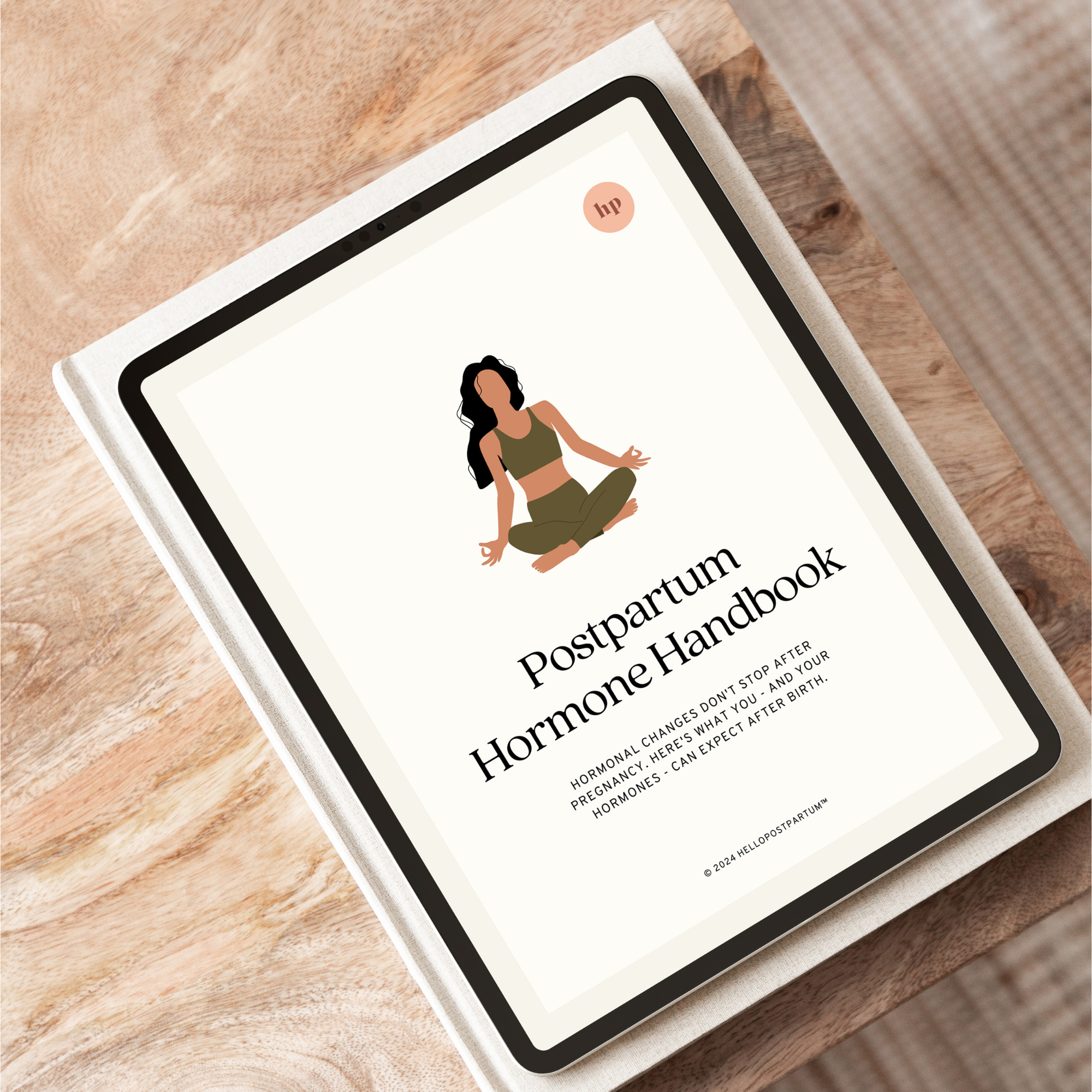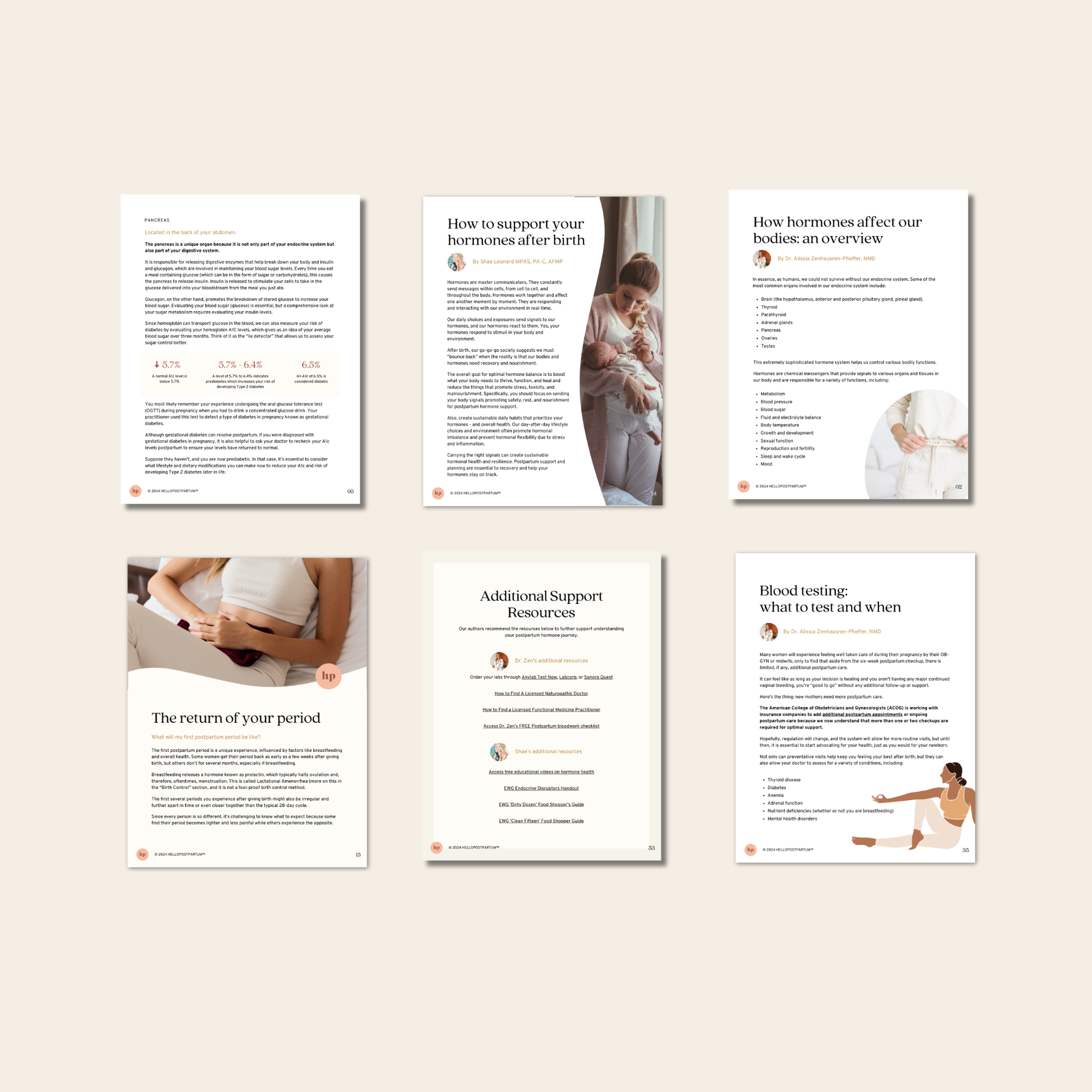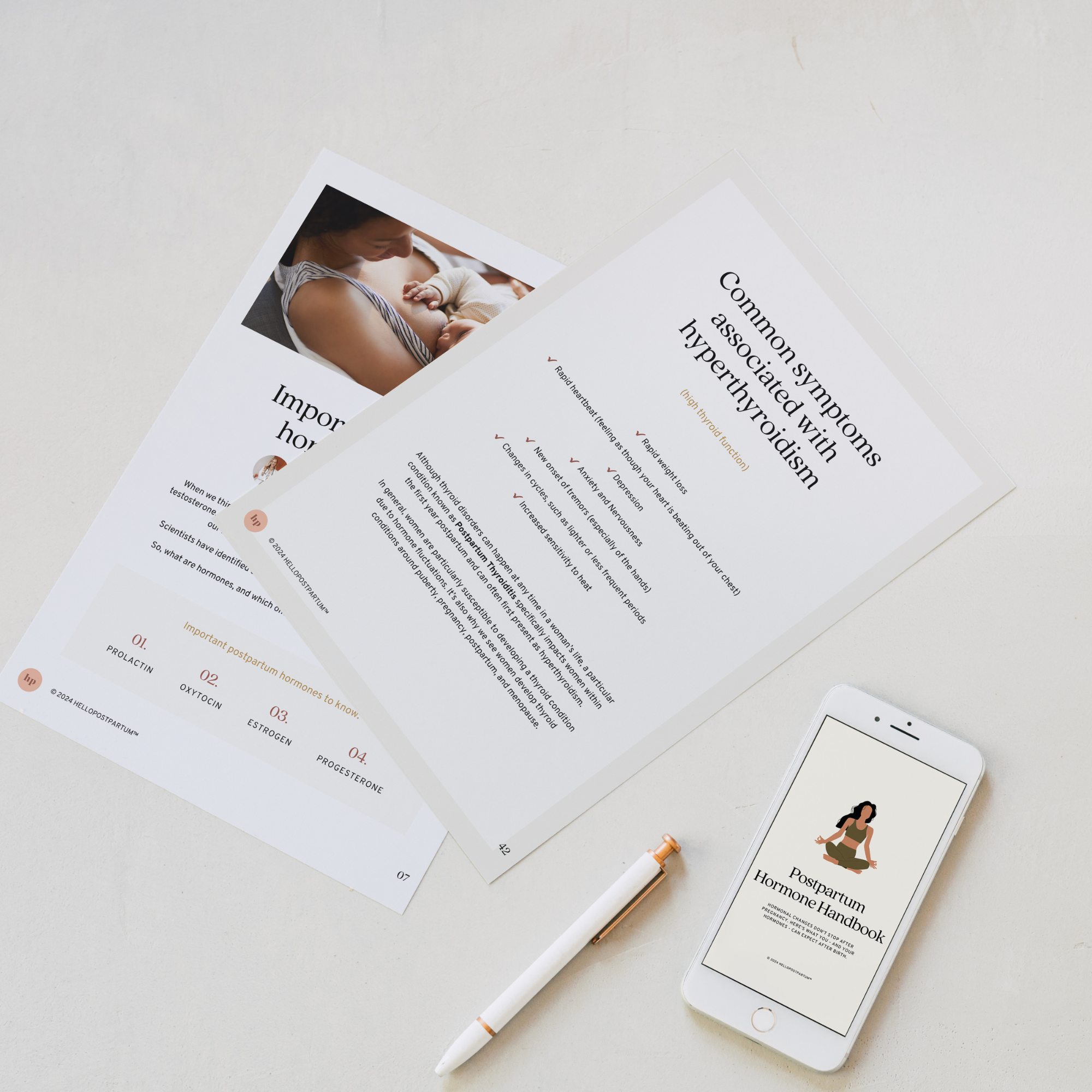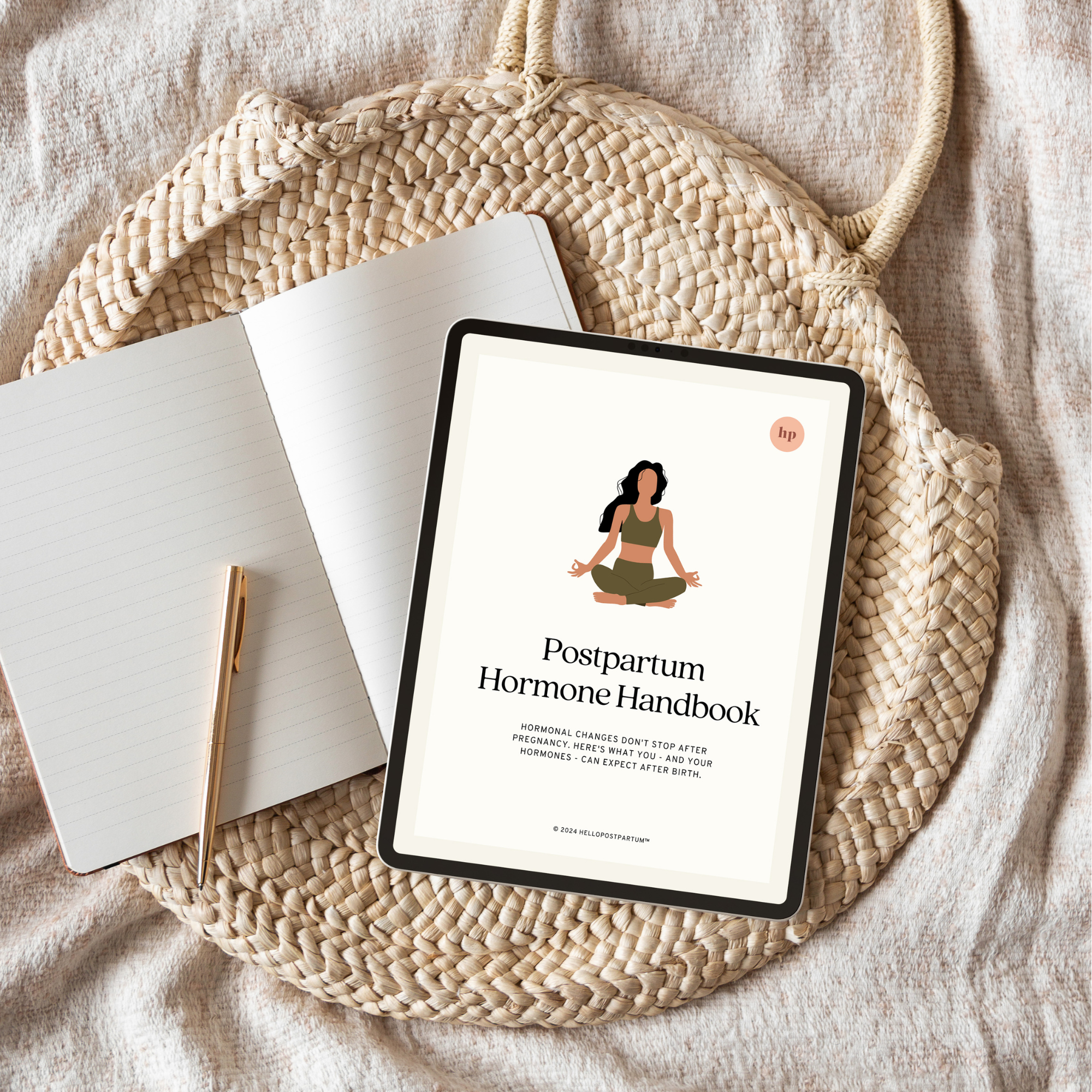





Postpartum Hormone Handbook
Written by a naturopathic doctor and a functional medicine practitioner, this 50+ page in-depth guide covers everything you need to know about navigating and supporting your changing hormones after birth.
Per copyright law, you may not share, duplicate, or distribute these books without written permission from Hello Postpartum.
You'll receive your eBook directly in your inbox at the email address used at checkout.
Are you gifting it? You can enter your recipient's email at checkout or send us an email after the purchase, and we'll send them instructions on how to download their gift.
What you need to know
Your hormones keep changing after birth
From postpartum hair loss to pesky night sweats, hormonal changes don’t stop after pregnancy. This book teaches what you – and your postpartum hormones – can expect after birth and beyond.
Comprehensive support
What's included?
More than an eBook, this hormone handbook covers everything you need to know about recovery (and so much more!).
• A 50+ page book written by hormone experts
• Postpartum bloodwork cheatsheet (doctor-approved!)
• Comprehensive birth control guide
• Postpartum hormone timeline

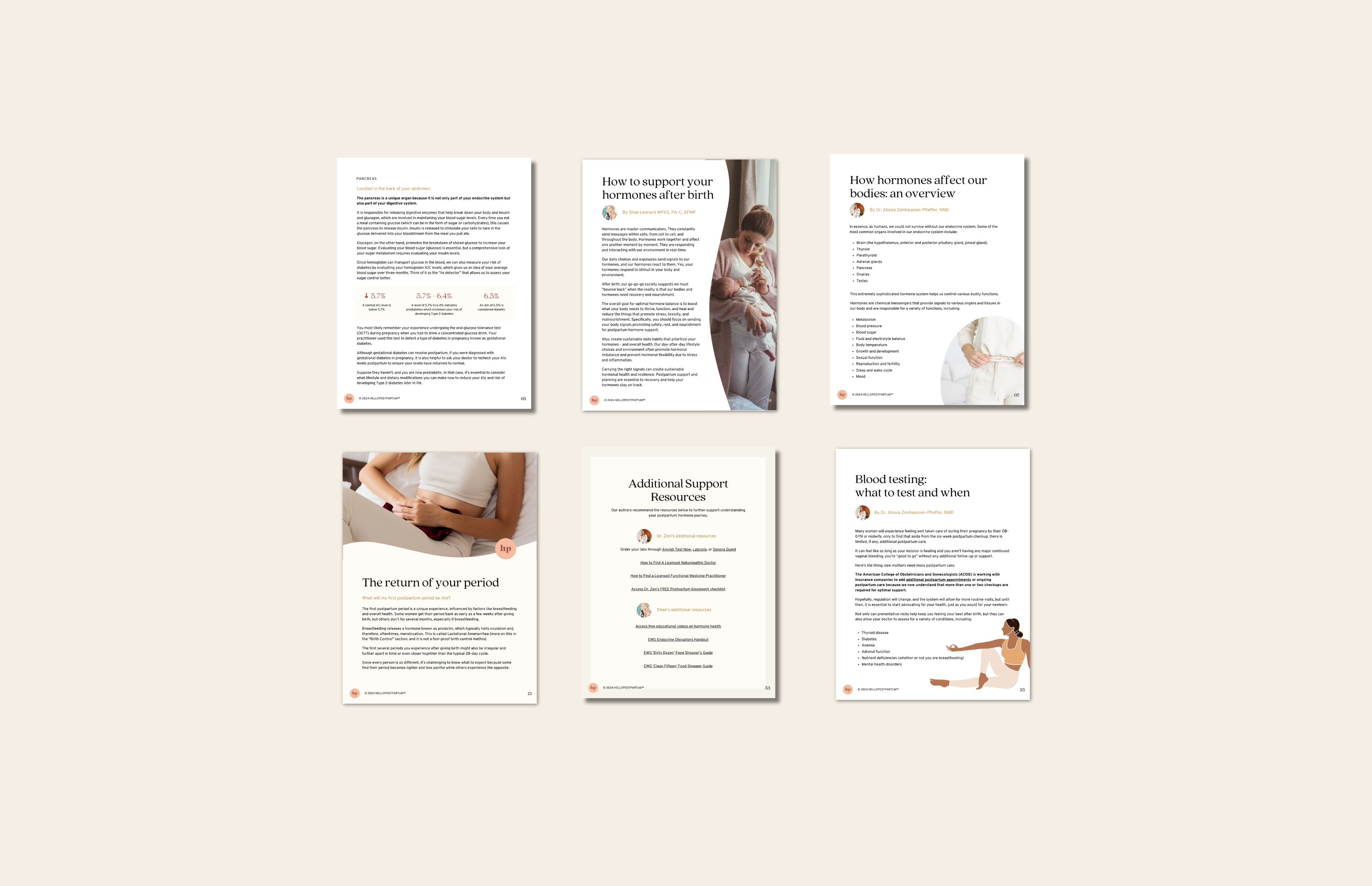
expert-written
Information you can trust
Written by a naturopathic doctor and a functional medicine practitioner, this 50+ page in-depth guide covers everything you need to know about navigating and supporting your changing hormones after birth.
Your hormones play a role in everything and are everywhere after birth. This eBook will help you better understand what happens inside your body postpartum.
From lifestyle suggestions to environmental changes to simple hormone-supporting food options, you'll learn how to best support your hormones in a way that feels accessible and realistic.
knowledge-packed
What will I learn?
You'll learn about your hormones and more, including:
- The top postpartum hormones
- What to expect at key milestones
- How to support your hormones
- Your first postpartum period
- What your birth control options really are
- Signs of hormonal imbalance
- What to know about hormone testing
- The bloodwork to request from your doctor
Plus, we dive deep into a hormonal diagnosis that quietly affects up to 5% of new mothers (and they might not even realize it!). It's important information that you should know after giving birth.
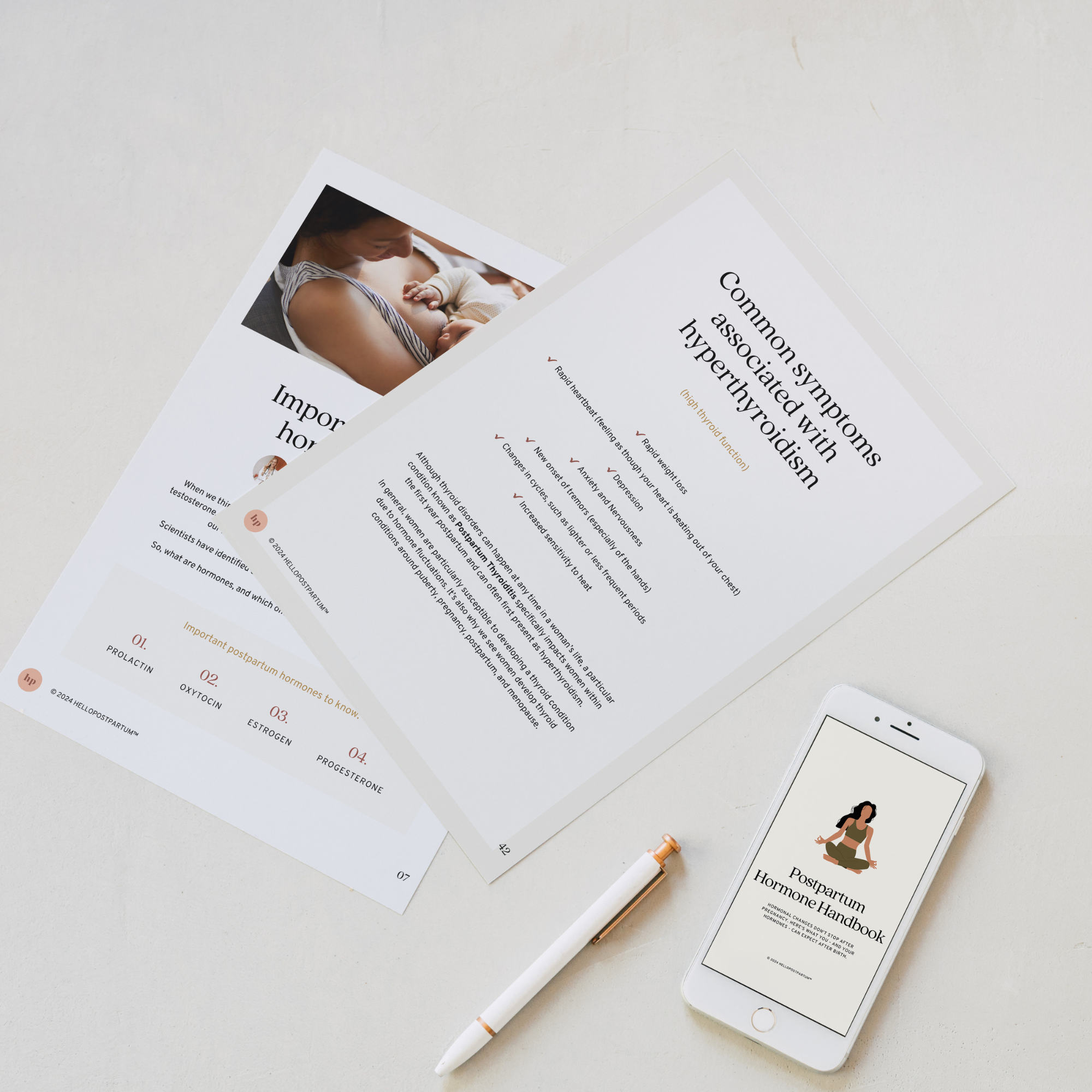
This eBook was written by both a Naturopathic Doctor and a functional medicine practitioner specializing in women's hormones.
Upon a completed checkout, you'll receive an email with a link to download your eBook. If you don't see anything within a few minutes, we recommend checking your "Spam" or "Promotions" folder.
Once you've successfully downloaded your eBook to your device (either your phone or computer), you can quickly and conveniently access it for easy reading. Additionally, all of our postpartum eBooks are formatted for print. If you prefer a paper copy, you can send the file to a local print shop for easy printing and binding.
Yes! Simply check the box 'Is this item a gift?' and enter your gift message and select a gift card at checkout. Since the book is digital, you can either email it to yourself or your recipient. We can then write a hand-written card to let them know about their eBook, if you'd like!
While we love sharing, it's important to know that per copyright law, you may not share, duplicate, or distribute these books without written permission from Hello Postpartum. Consider gifting your friend their own copy!

